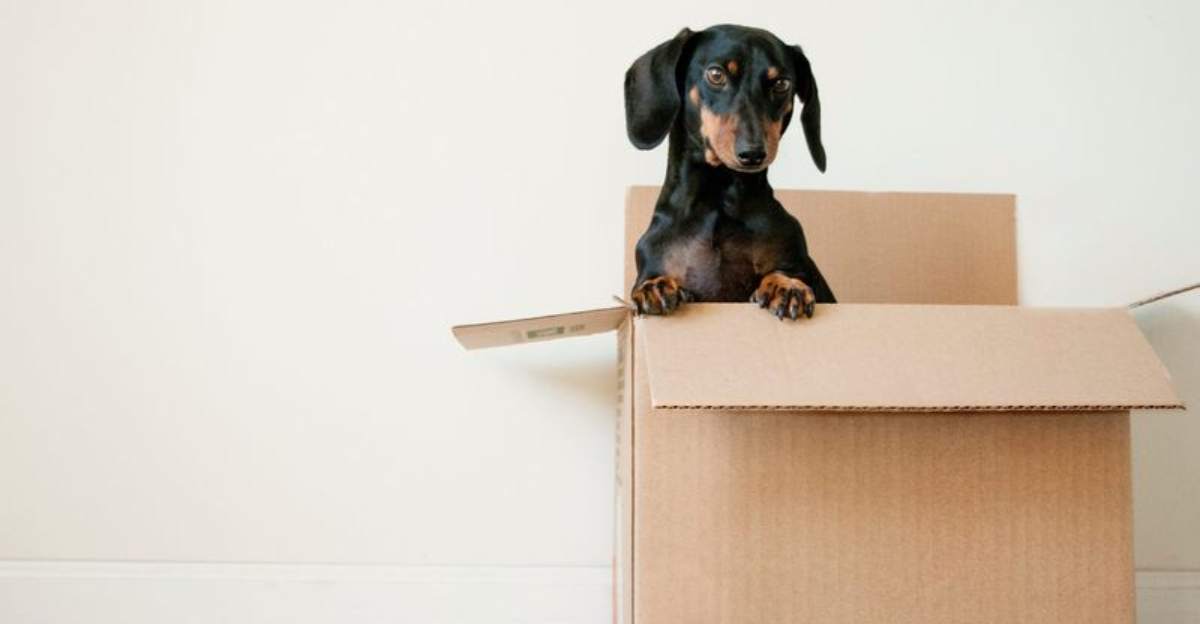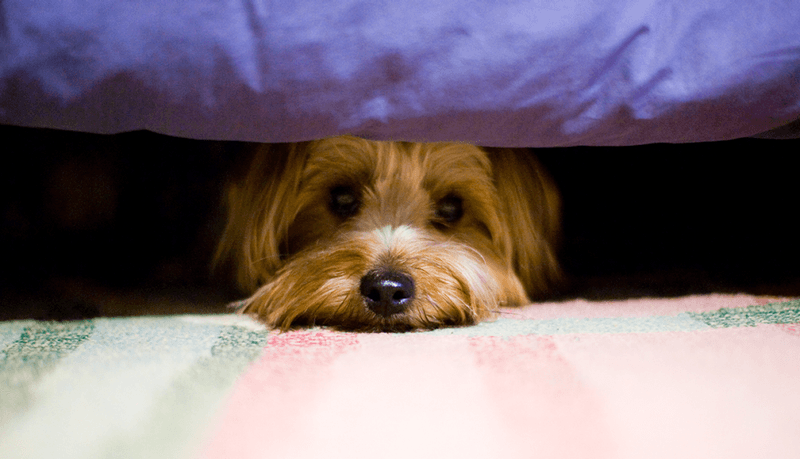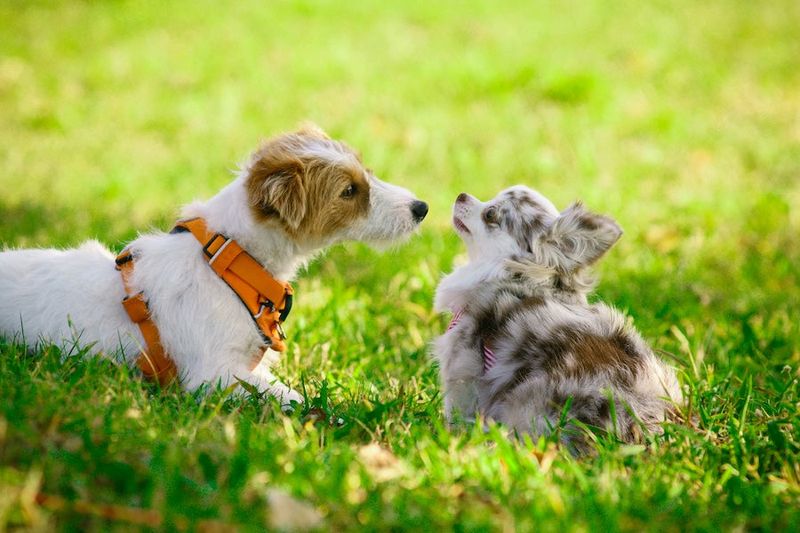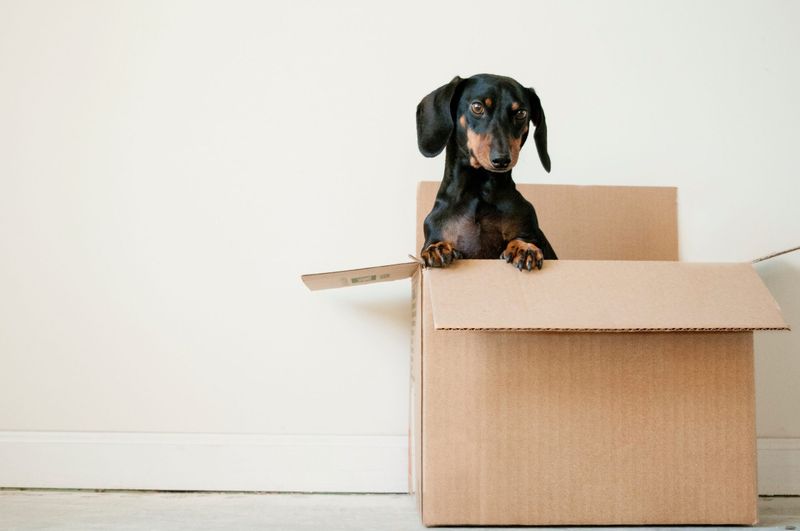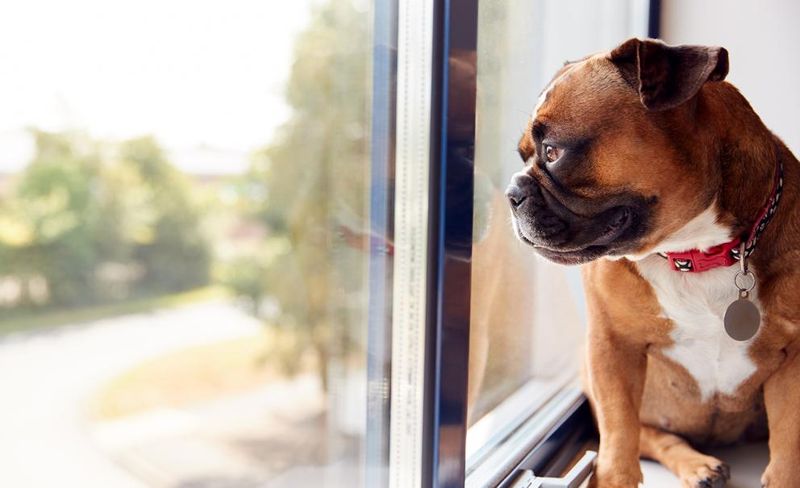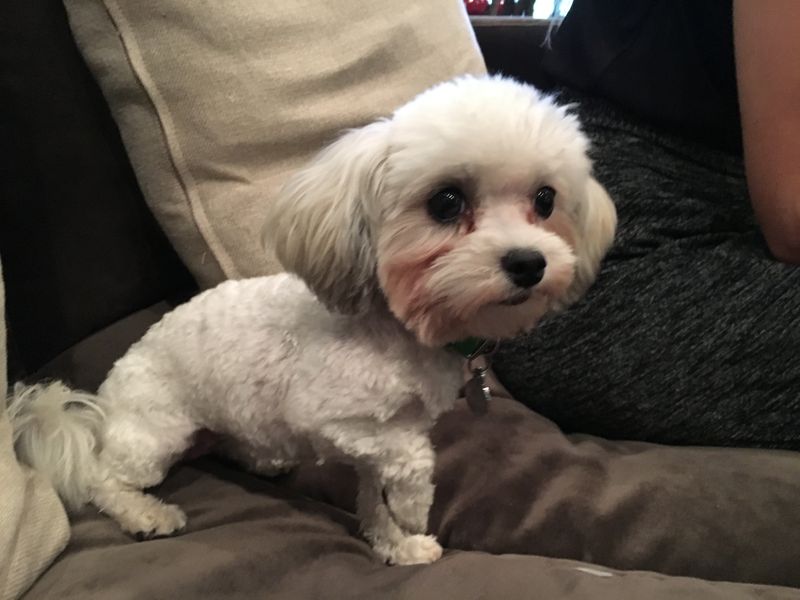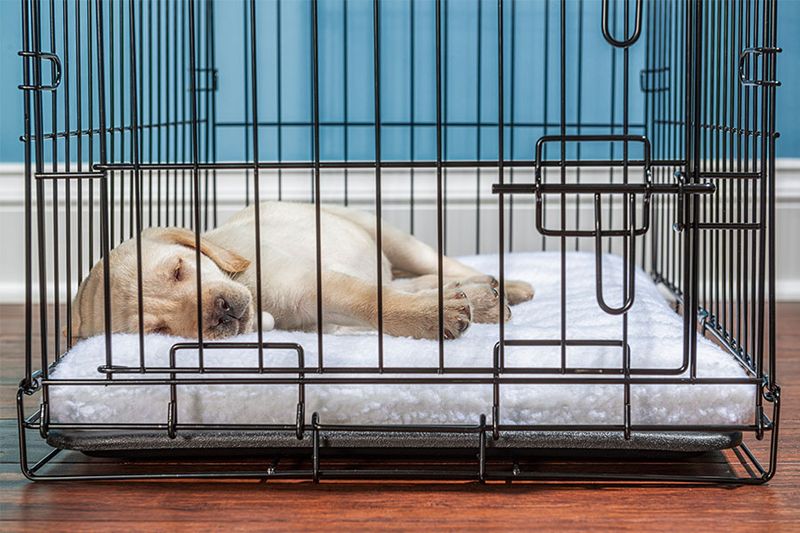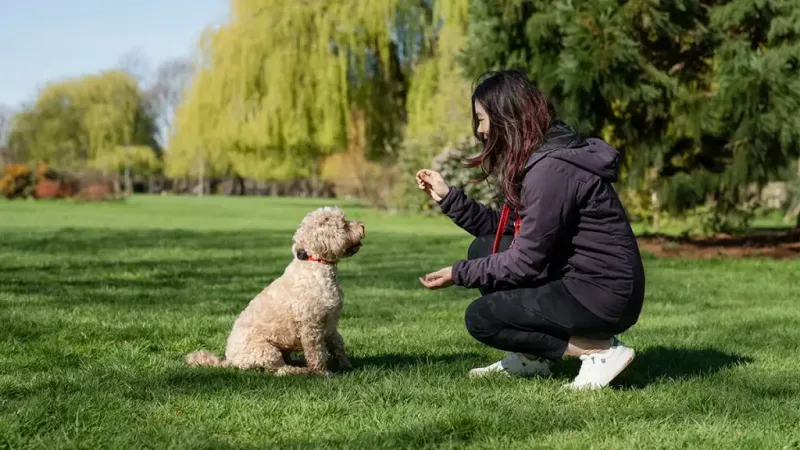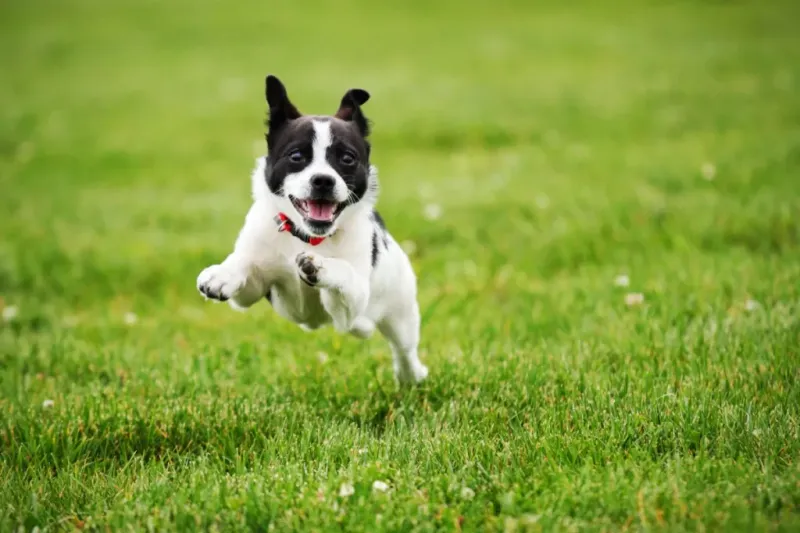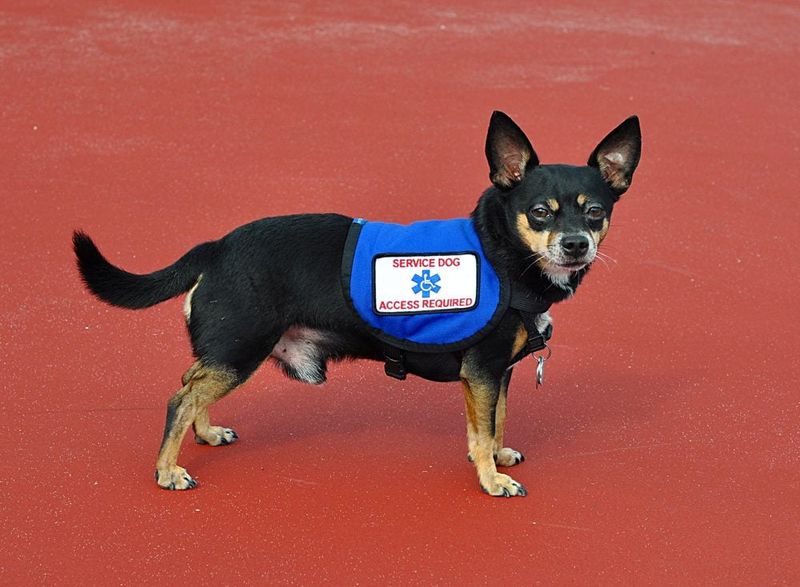Small dogs, with their delicate frames and big personalities, often struggle with anxiety. Understanding the reasons behind their anxious behaviors can help pet owners provide a more comforting environment. By addressing these concerns and implementing strategies to soothe their fears, small dogs can live happier, more relaxed lives. Here, we explore seven common reasons for their anxiety and provide seven effective ways to help them feel secure.
Loud Noises: Thunderstorms and Fireworks
Imagine the world from a small dog’s perspective—a world where every loud noise is amplified and terrifying. Thunderstorms and fireworks, with their sudden booms and flashes, can be particularly frightening for small breeds. These unexpected sounds can trigger anxiety, causing them to tremble or hide.
Owners might notice their pets seeking refuge in closets or under furniture during these times. Comforting them with a calm voice and gentle petting can help. Providing a safe, quiet space where they can retreat can make a significant difference in easing their fears.
Separation Anxiety
Separation anxiety is a common issue for small dogs who form strong bonds with their owners. These pets often become distressed when left alone, displaying behaviors such as barking, whining, or destructive chewing. Their sensitive natures make them prone to feeling abandoned.
To help ease this anxiety, owners can try desensitization techniques, gradually getting their pets used to being alone for short periods. Creating a comfortable environment with toys and scents of the owner can also provide comfort. Over time, these efforts can reassure the dog that their owner will return.
Socialization Challenges
For small dogs, the world can seem daunting, especially when it comes to socializing with larger breeds. Their size disadvantage can lead to fear and anxiety in social situations. The looming presence of bigger dogs often makes them feel vulnerable.
Encouraging positive interactions with other dogs, starting slowly with gentle introductions, can build their confidence. Puppy classes and controlled playdates offer safe environments for socialization. By carefully managing their exposure, owners can help their small dogs become more sociable and less fearful.
Changes in Environment
Small dogs thrive on routine and familiarity, so changes in their environment can be unsettling. Moving homes, rearranging furniture, or even new household members can disrupt their sense of security. These changes might lead to anxiety, as they struggle to adapt to new surroundings.
To ease the transition, maintaining some familiar elements, like favorite toys or blankets, can provide comfort. Gradually introducing changes and spending extra time with them helps reassure the dog that they are safe and loved, even in new settings.
Health Issues
Health problems can be a significant source of anxiety for small dogs. Conditions such as dental issues, allergies, or arthritis can cause discomfort and stress. Their sensitive bodies often make them more susceptible to certain ailments, which can manifest as anxiety-related behaviors.
Regular vet check-ups are essential to catch and address health issues early. Ensuring they receive proper nutrition, exercise, and medical care can alleviate discomfort. A healthy dog is typically a happier, more relaxed pet, free from the anxiety that health issues can provoke.
Lack of Routine
Routine provides a sense of security for small dogs. Without a predictable schedule, they may feel anxious and restless. Uncertainty about feeding times, walks, and play can contribute to their stress.
Establishing a daily routine with set times for meals, walks, and play can help them feel secure. Consistency in their daily activities reassures them, reducing anxiety. A structured routine helps balance their energy levels and keeps them calm, knowing what to expect each day.
Past Trauma or Neglect
Past experiences of trauma or neglect can linger, affecting a small dog’s behavior and anxiety levels. Dogs who have faced abuse or abandonment may carry these memories, leading to fearfulness and mistrust.
Building trust through patience, love, and understanding is crucial. Providing a stable, nurturing environment helps them heal emotionally. Positive reinforcement and gentle handling can gradually rebuild their confidence, allowing them to overcome past fears and thrive in their new homes.
Creating a Safe Space
Providing a designated safe space can greatly reduce a small dog’s anxiety. This area should be comfortable, quiet, and equipped with familiar items like their bed and toys.
Knowing they have a personal sanctuary to retreat to when overwhelmed gives them a sense of security. Owners can enhance this space with calming elements, such as soft music or a piece of clothing with the owner’s scent. Creating this haven is an effective way to help small dogs feel at ease in their environment.
Gradual Socialization
Introducing small dogs to new social settings gradually can help ease their anxiety. Start with quiet, controlled environments before moving to more bustling areas. This step-by-step approach allows them to build confidence at their own pace.
Positive reinforcement for calm behavior encourages them to explore and interact more comfortably. Over time, they become more adaptable, handling various social situations with ease. This gradual exposure helps prevent overwhelming them and fosters a positive outlook on socializing.
Consistent Training
Training is vital for helping small dogs feel secure. Consistent sessions focusing on basic commands and positive behavior reinforcement enable them to understand expectations.
Training builds trust between the dog and owner, creating a sense of stability. It also provides mental stimulation, which can alleviate anxiety by keeping them engaged. Small dogs thrive when they know what is expected of them, making consistent training a key component of their well-being.
Calming Supplements and Toys
Calming supplements and toys can be beneficial for anxious small dogs. Products like pheromone diffusers, CBD oil, or stress-relief toys provide additional support.
These items can be particularly helpful during stressful events, such as thunderstorms or when new people visit. Offering these calming aids alongside other anxiety-reducing strategies creates a comprehensive approach. The goal is to provide a sense of comfort and relaxation, helping small dogs navigate anxiety-inducing situations more calmly.
Exercise and Play
Regular exercise and playtime are essential for reducing anxiety in small dogs. Physical activity helps expend excess energy, which can otherwise manifest as anxiety.
Interactive play and daily walks provide mental stimulation, improving their mood and overall well-being. Engaging in playful activities strengthens the bond between owner and pet, offering reassurance. A tired dog is often a relaxed dog, making exercise a crucial part of anxiety management.
Use of Calming Techniques
Calming techniques can significantly alleviate anxiety in small dogs. Techniques such as gentle massage, deep breathing exercises, or playing relaxing music can soothe them.
These methods create positive associations and help dogs cope with stressful situations. Owners who incorporate these techniques into their routine often find their pets are more relaxed and happier. Personalized calming strategies tailored to the dog’s needs can enhance their sense of security and well-being.
Professional Support and Behaviorists
For some small dogs, professional support may be necessary. Animal behaviorists can offer expert guidance in managing anxiety-related behaviors. They provide tailored strategies and training plans.
In severe cases, consulting a veterinarian for medical options might be advisable. Professional support ensures a comprehensive approach, addressing underlying issues and enhancing the dog’s quality of life. These specialists can be pivotal in helping small dogs overcome profound anxiety challenges, leading them to a happier, more balanced existence.
